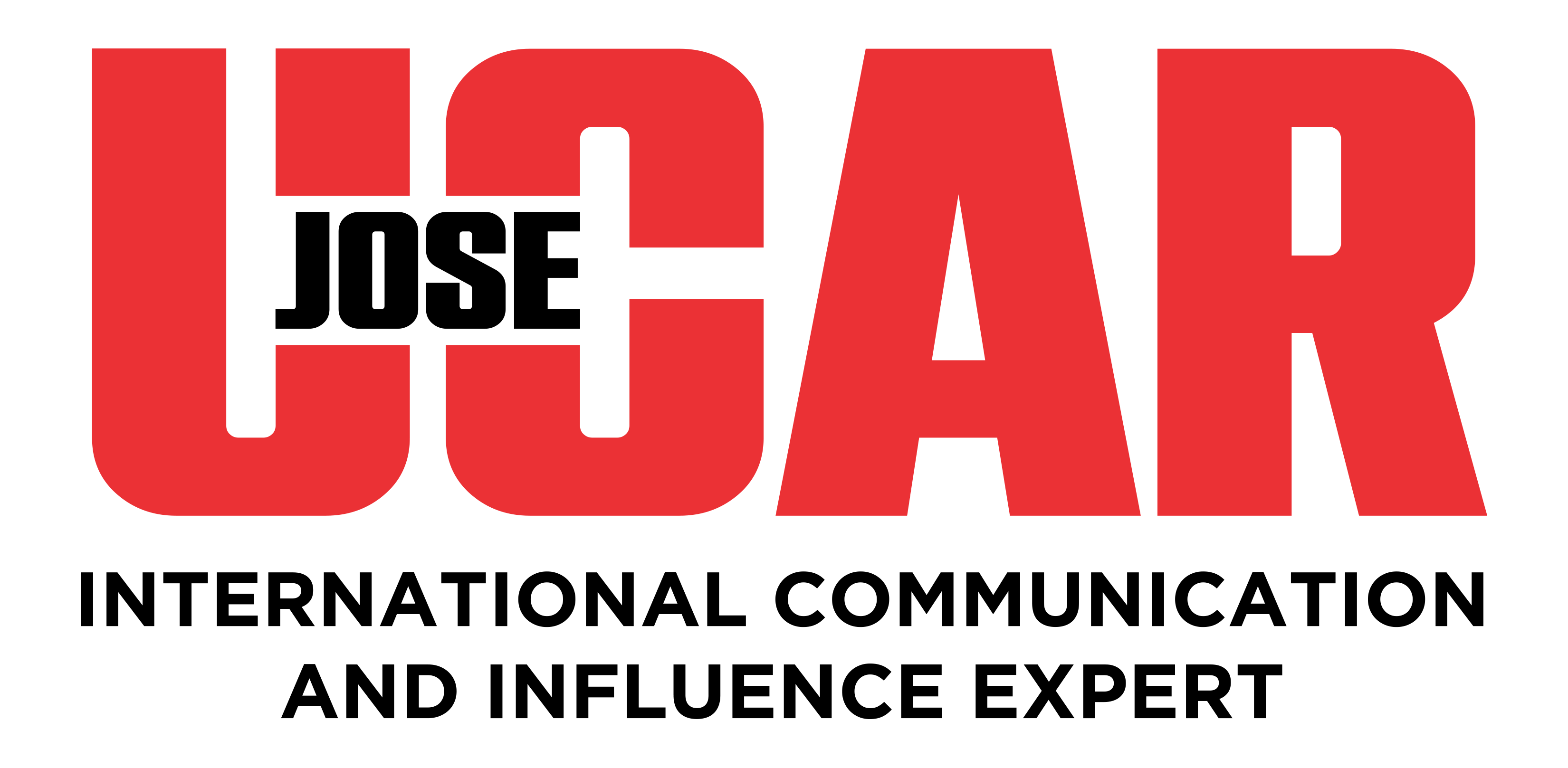In today’s fast-paced and diverse professional environments, the ability to effectively handle difficult conversations and provide constructive feedback is not just a skill but a necessity. Whether you’re a team leader, a budding professional, or anyone in between, understanding the intricate dance of workplace communication is key to fostering a culture of respect, innovation, and growth.
In this post, I delve into the nuanced world of conflict resolution and feedback dynamics. From dissecting the nature of conflict to exploring the strategies for delivering and receiving feedback with confidence, I aim to equip you with the insights and tools necessary for turning challenging interactions into opportunities for development and collaboration. Join me in unraveling the complexities of workplace conversations, transforming them from daunting tasks into pathways for building stronger, more effective professional relationships.
Understanding Conflict:
Defining Conflict
Conflict is an inevitable part of human interaction, characterised by a perceived clash of interests, beliefs, or values between individuals or groups. It arises when parties believe their needs, desires, or concerns are incompatible with those of others. In a workplace setting, conflict might emerge from various sources, such as resource allocation, management styles, personal values, or organisational change.
The Nature of Conflict: A Misunderstood Phenomenon
Often, conflict is viewed negatively, seen as a disruptor of peace and harmony. This perception can lead to the avoidance of addressing conflict, which, paradoxically, can exacerbate issues. However, it’s crucial to understand that conflict, by itself, is a neutral phenomenon. It’s neither good nor bad; rather, it’s the management (or mismanagement) of conflict that leads to positive or negative outcomes.
Positive Aspects of Conflict
When managed effectively, conflict can be a powerful catalyst for growth and innovation. Here’s how:
- Stimulates Critical Thinking: Conflicting viewpoints encourage individuals to challenge their assumptions and think critically, fostering a more in-depth exploration of ideas.
- Enhances Creativity and Innovation: The clash of differing perspectives can be a breeding ground for innovative solutions and new approaches.
- Promotes Personal and Professional Growth: Navigating through conflicts can build communication skills, emotional intelligence, and resilience.
- Improves Understanding and Team Cohesion: Constructive conflict resolution can lead to a better understanding of colleagues, fostering stronger, more cohesive teams.
- Facilitates Change and Adaptation: Conflict can highlight underlying issues that need to be addressed, paving the way for necessary changes within an organisation.
Negative Consequences of Poorly Managed Conflict
On the flip side, if conflict is not addressed constructively, it can lead to:
- Stress and Anxiety: Unresolved conflict can create an environment of tension and discomfort, impacting mental well-being.
- Breakdown of Communication: Conflict can lead to a breakdown in communication, further entrenching misunderstandings and hostility.
- Reduced Team Effectiveness: Prolonged conflict can erode trust and cooperation, hampering team performance and morale.
- Loss of Talent: A toxic environment due to mishandled conflict can lead to high staff turnover.
- Impeded Organisational Growth: Persistent, unresolved conflict can divert energy from productive tasks and inhibit growth.
Conflict as an Opportunity
Viewing conflict as an opportunity rather than a threat is a paradigm shift that can transform interactions. It involves:
- Adopting a Positive Mindset: Approach conflict with the mindset that it can lead to positive outcomes.
- Emphasising Active Listening: Understand the other party’s perspective without judgment.
- Encouraging Open Dialogue: Create a safe space for open, honest, and respectful communication.
- Seeking Win-Win Solutions: Aim for solutions that satisfy the needs of all parties involved.
- Learning from Each Experience: Reflect on each conflict situation to glean insights and lessons for future interactions.
Understanding the nature of conflict is foundational. It’s about recognising that conflict, when approached with the right mindset and skills, can be a valuable tool for personal growth, relationship building, and organisational improvement. The goal is not to eliminate conflict but to harness it constructively, turning potential challenges into opportunities for development.
The Challenges of Tough Conversations

Understanding the Hurdles in Tough Conversations
Tough conversations, especially in a professional setting, are often fraught with emotional complexity and perceived risks. Understanding the underlying reasons why these conversations are difficult is crucial for effective communication and relationship building.
Emotional Vulnerability
- Nature of Vulnerability: Engaging in tough conversations often requires individuals to discuss topics that are deeply personal or sensitive. This can involve admitting mistakes, addressing performance issues, or discussing personal grievances.
- Impact on Self-Image: Such discussions can threaten one’s self-image or sense of competence, leading to feelings of defensiveness or insecurity.
- Creating a Safe Space: To mitigate this, it’s important to foster a safe environment where individuals feel comfortable expressing their vulnerabilities without fear of judgment or reprisal.
Fear of Conflict
- Avoidance as a Defence Mechanism: Many people have a natural tendency to avoid conflict, fearing that addressing contentious issues might escalate tensions or lead to undesirable outcomes.
- Relationship Dynamics: There’s often a concern that tough conversations might damage professional relationships, leading to a less collaborative and more hostile work environment.
- Managing the Fear: Overcoming this fear involves reframing the conversation as an opportunity for constructive change rather than a confrontation.
Lack of Skills
- Communication Skills are Learned: Effective communication during difficult conversations is not an innate talent but a skill that can be developed over time. This includes active listening, empathy, clarity in articulation, and managing emotions.
- Training and Practice: Providing training and opportunities for practice can significantly improve an individual’s ability to handle tough conversations with confidence.
Concern About Misinterpretation
- Risk of Being Misunderstood: There is always a risk that the intended message will be misunderstood, leading to further complications or confusion.
- Clarity and Feedback Loops: Ensuring clarity in communication and creating feedback loops, such as summarising key points and asking for the other person’s understanding, can help mitigate this risk.
Building a Bridge from Understanding Conflict to Engaging in Tough Conversations
Drawing from the understanding of conflict, these challenges can be reframed within the context of ‘Feedback and Confident Conversations’. Being aware that conflict is not inherently negative and can be a catalyst for growth, the approach to tough conversations shifts from avoidance to engagement. By acknowledging emotional vulnerability, addressing the fear of conflict, enhancing communication skills, and ensuring clarity to prevent misinterpretation, tough conversations can be transformed into productive dialogues that foster professional growth and stronger relationships.
This blog, thus, positions tough conversations not as daunting obstacles but as opportunities for meaningful interaction and development. It underscores the importance of approaching these conversations with the right mindset, equipped with the necessary skills, and understanding to navigate the complexities they entail. This perspective shift is pivotal in promoting a culture where feedback and confident conversations are not just accepted but embraced as essential tools for personal and organisational advancement.
Decoding the DNA of Difficult Conversations
In the realm of challenging dialogues, understanding the inherent structure can be immensely helpful. Difficult conversations typically revolve around three core elements: the “What Happened?” conversation, the Feelings conversation, and the Identity conversation. Recognising and addressing these elements can lead to more effective and constructive outcomes.
The “What Happened?” Conversation
- Divergence in Perceptions: This aspect of the conversation involves conflicting perspectives on the events that led to the conversation. Each party often has a different narrative about what transpired.
- Avoiding Blame: A critical part of navigating this conversation is steering clear of blame. Instead, focus on understanding each perspective and recognising that multiple realities can exist simultaneously.
- Seeking a Shared Understanding: The goal should be to develop a mutual understanding of the events, acknowledging each person’s viewpoint without necessarily agreeing on one single version of the story.
The Feelings Conversation
- Emotions at the Core: Difficult conversations are often charged with emotions that are either unexpressed or not directly addressed. These emotions can range from fear and frustration to disappointment and resentment.
- Validating Feelings: It’s important to recognise and validate these emotions, both in oneself and in the other party. Acknowledging feelings can prevent them from becoming barriers to resolution.
- Managing Emotions Constructively: Developing emotional intelligence is key. This includes being able to express one’s emotions clearly and empathetically understanding the feelings of others.
The Identity Conversation
- Impact on Self-Perception: This layer of the conversation touches on how the conflict affects each person’s identity or sense of self. It involves fears or questions about competency, goodness, or worthiness.
- Avoiding Identity Traps: People often fall into “identity traps,” where they feel the need to defend their character or self-image. Realising these traps allows for a more open and less defensive conversation.
- Balancing the Identity Equation: Strive for an identity balance where the conversation doesn’t threaten the core sense of self but rather contributes to a nuanced understanding of one’s identity in a professional context.
Integrating the Three Elements
- Comprehension and Connection: Understanding these three elements provides a framework for comprehending the underlying complexities of difficult conversations. It’s about connecting the dots between the factual disagreements, the emotional undercurrents, and the identity implications.
- Strategic Approach: Armed with this understanding, one can strategically approach tough conversations. It involves dissecting each element, addressing them individually, and then integrating the insights gained to form a comprehensive view of the situation.
- Facilitating Productive Dialogue: Acknowledging and addressing these three elements can transform a potentially contentious conversation into a productive and insightful dialogue. It allows for a deeper understanding, not just of the issue at hand, but also of the people involved and their interactions.
- Towards Constructive Outcomes: This holistic approach is instrumental in steering conversations towards more constructive outcomes. It enables the participants to move beyond mere problem-solving to a place of mutual understanding and respect, paving the way for effective feedback and confident conversations.
Exploring these three elements in detail will provide you with a nuanced framework for navigating difficult conversations. This approach not only aids in resolving the immediate issues but also contributes to the development of stronger communication skills, better emotional intelligence, and a more profound understanding of personal and professional relationships.
Mastering the Art of Giving Feedback
Principles of Effective Feedback
Providing feedback is a critical skill in fostering growth and development, both in professional and personal contexts. To make feedback effective and conducive to positive change, certain principles should be adhered to.
Specific and Behaviour-Focused
- Clarity in Details: Feedback should pinpoint specific behaviours or actions rather than vague generalisations. This clarity helps the recipient understand exactly what actions are being addressed.
- Focus on Observable behaviour: Concentrate on what the person did, not on personal attributes. For example, instead of saying, “You’re disorganised,” specify, “Your report was missing key data.”
- Actionable Insights: Specific feedback provides clear guidance on what can be changed or improved.
Constructive and Forward-Looking
- Growth-Oriented: The primary aim of feedback should be to promote growth and improvement. It’s about guiding the recipient towards better future performance, not just pointing out past mistakes.
- Positive Framing: Present feedback in a way that highlights opportunities for development, rather than just enumerating shortcomings.
- Encouraging Dialogue: Encourage a two-way conversation where the recipient can ask questions and discuss ways to improve.
Timely and Relevant
- Prompt Delivery: Feedback is most effective when given soon after the observed behaviour. This ensures that the details are fresh and more relevant.
- Contextual Relevance: Ensure that the feedback is pertinent to the recipient’s current projects, roles, or responsibilities. Irrelevant feedback can be confusing and demotivating.
Balanced
- Incorporating Positives: Balancing criticism with positive feedback helps in maintaining the recipient’s motivation and self-esteem. Acknowledging what they are doing well can make them more receptive to hearing areas of improvement.
- Avoiding the “Sandwich” Approach: While balancing feedback, avoid the cliché of ‘sandwiching’ negative feedback between positives, as this can dilute the message and create confusion. Instead, integrate positive elements in a way that feels genuine and constructive.
Implementing Feedback Principles in Conversations
- Preparation: Before giving feedback, prepare by reflecting on specific points you want to address, considering the individual’s circumstances, and planning how to articulate your points constructively.
- Setting the Right Tone: The tone of the conversation should be collaborative rather than confrontational. It’s about working together to find solutions and improvements.
- Encouraging Recipient’s Perspective: Invite the feedback recipient to share their viewpoint. This not only helps in understanding their perspective but also makes the feedback process more interactive and less one-sided.
- Follow-Up: Provide ongoing support and guidance after the feedback session. This could involve setting specific goals, regular check-ins, or providing resources for improvement.
The AID Model:
To enhance the effectiveness of feedback, one can employ the AID (Action, Impact, Do) model. This structured approach aligns well with the principles of giving specific, constructive, timely, and balanced feedback. Let’s integrate the AID model into the previously discussed feedback principles.
AID Model Explained
- Action: Clearly specify the action or behaviour that is being addressed. This aligns with the principle of being specific and behaviour focused.
- Example: “In yesterday’s meeting, when you interrupted several times while others were speaking…”
- Impact: Describe the impact of the action on the team, project, or individual. This step resonates with being constructive and forward-looking, as it helps the recipient understand the consequences of their behaviour.
- Example: “…it created an atmosphere where some team members felt they couldn’t express their ideas freely, which limited our discussion.”
- Do: Offer a clear suggestion or request for what should be done differently in the future. This ties in with the principle of being timely and relevant, providing actionable advice for improvement.
- Example: “Going forward, I’d appreciate it if you could allow others to finish their points before you respond.”
Remember, it’s not just about delivering a message, but about fostering a constructive dialogue that encourages growth, learning, and positive change. The art of feedback, when mastered, becomes a powerful tool for building trust, improving performance, and enhancing relationships in any collaborative environment.
The DAWA Stages of Feedback Reception
Understanding Reactions to Feedback: The DAWA Model
It is essential to explore how individuals typically respond to feedback. The DAWA stages – Denial, Anger, Withdrawal, Acceptance – provide a framework for understanding these reactions. Recognising and appropriately responding to these stages can greatly enhance the effectiveness of feedback.
Denial
- Characteristics: In this stage, individuals may refuse to acknowledge the validity of the feedback. This denial can stem from surprise, a lack of self-awareness, or a mismatch between their self-perception and the feedback received.
- Handling Denial: When encountering denial, it’s important to remain calm and empathetic. Provide specific examples to support the feedback and encourage a dialogue to explore the reasons behind this denial.
Anger
- Characteristics: Anger or frustration is a common emotional response, especially if the feedback challenges the individual’s sense of competence or worth.
- Navigating Anger: The key here is not to counter anger with defensiveness but to acknowledge their feelings. Allow them space to express their emotions, while maintaining a focus on the constructive nature of the feedback.
Withdrawal
- Characteristics: Withdrawal manifests as disengagement, silence, or reluctance to participate in further discussion. This can be a defence mechanism to protect oneself from perceived criticism.
- Addressing Withdrawal: Encourage open communication and express your support. It’s vital to reassure the individual that the feedback is meant to aid their growth and is not a personal attack.
Acceptance
- Characteristics: In this stage, the individual acknowledges the feedback and begins to consider it constructively. Acceptance is the turning point where feedback can start to be integrated into personal or professional development.
- Facilitating Acceptance: Once acceptance is reached, it’s crucial to work together to develop a plan for improvement or change. Offer guidance, resources, and support to help them act on the feedback.
Moving Through the Stages
- Recognise the Stages: Each individual may move through these stages at a different pace. Realising which stage the person is in can guide how you interact with them post-feedback.
- Emotional Intelligence: Applying emotional intelligence is key in navigating these stages. It involves being sensitive to the emotions of others and responding in ways that respect their feelings while still conveying the necessary message.
- Encouraging Reflection: Encourage self-reflection at each stage. Reflection can help individuals process their emotions and thoughts, facilitating a smoother transition through the DAWA stages.
- Continuous Support: Offer continuous support throughout these stages. Regular check-ins and constructive conversations can help individuals move from initial denial or anger to eventual acceptance more effectively.
Feedback is also about guiding individuals through their emotional and cognitive responses to the message you deliver. This approach fosters a more receptive and constructive environment for feedback and confident conversations, paving the way for personal and professional growth.
Strategically Positioning Difficult Conversations
Planning and Preparing for Difficult Conversations
It’s key to emphasise the significance of planning and preparation before diving into difficult conversations. This phase sets the groundwork for a constructive and effective dialogue, reducing the likelihood of misunderstandings and negative reactions.
Understanding Your Objectives
- Clarify Goals: Start by clarifying what you wish to achieve from the conversation. Are you addressing a performance issue, resolving a conflict, or providing critical feedback? Clear objectives guide the direction and tone of the conversation.
- Outcome Visualisation: Visualise the desired outcome. What would a successful conversation look like? This helps in staying focused and positive throughout the dialogue.
Empathising with the Other Person
- Perspective Taking: Put yourself in the other person’s shoes. What are their possible feelings, thoughts, or concerns regarding the issue?
- Emotional Intelligence: Employ emotional intelligence to understand the potential impact of your words and approach. Empathy is key in maintaining a respectful and considerate tone.
Planning Your Message
- Key Points Identification: Identify the main points you need to convey. What are the non-negotiables, and what can be open for discussion?
- Structured Approach: Plan to deliver your message in a structured manner. This could involve outlining the conversation with a clear beginning, middle, and end.
- Scripting vs. Flexibility: While it’s helpful to prepare what you want to say, be prepared to be flexible in your approach based on the conversation’s flow.
Choosing the Right Time and Setting
- Timing Is Key: Select a time when both you and the other party are least likely to be stressed or distracted. Avoid times of high workload or personal stress.
- Appropriate Environment: Choose a setting that ensures privacy and is free from interruptions. A neutral location is often better than a personal office, which can create a power imbalance.
- Consider Remote Conversations: In today’s remote working environments, consider if a video call might be more appropriate than an in-person meeting, but ensure that it still provides a confidential and focused space.
Additional Considerations
- Rehearse the Conversation: If possible, rehearse the key points of the conversation. This can be done alone, in front of a mirror, or with a trusted colleague or coach.
- Anticipate Responses: Think about possible responses or objections and plan how to address them calmly and constructively.
- Mindset and Attitude: Approach the conversation with a mindset of resolution and improvement, rather than blame or confrontation.
- Cultural Sensitivity: Be mindful of cultural differences that might influence how messages are received and interpreted.
Incorporating these strategies for planning and preparing for difficult conversations will provide you with the tools you need to approach these discussions with confidence and tact. By understanding objectives, empathising, carefully planning the message, and choosing the right setting, difficult conversations can be navigated more smoothly, leading to more positive outcomes. This preparation phase is crucial in transforming potentially contentious interactions into opportunities for constructive dialogue and strengthened relationships.
Effective Structure for Delivering Difficult Conversations
Structuring the Delivery of Difficult Conversations
It’s essential to have a roadmap for structuring difficult conversations. This structure not only helps in delivering the message effectively but also in maintaining a constructive and respectful dialogue.
Opening Gently
- Ease into the Conversation: Begin with a neutral and open-ended question or statement. This approach sets a non-confrontational tone and encourages the other person to be more open and less defensive.
- Example Openers: You might start with, “I’d like to discuss the recent project where we faced some challenges. Can you share your perspective on how it went?” This invites participation and shows that you value their viewpoint.
- Setting a Collaborative Tone: Highlight that the purpose of the conversation is mutual understanding and improvement, not blame.
Stating the Issue Clearly
- Concise and Factual: Clearly state the issue at hand. Stick to the facts and avoid making assumptions or judgments.
- Focus on behaviour, Not Character: Frame the issue in terms of specific behaviours or situations, rather than personal traits. For example, say, “I noticed the report was submitted past the deadline,” instead of, “You’re always late.”
- Objective Language: Use objective language that is free from emotional charge or accusatory tones.
Active Listening
- Give Them the Floor: After stating the issue, give the other person a chance to respond. Listen actively to their perspective.
- Non-Verbal Cues: Show that you are listening through appropriate non-verbal cues like nodding and maintaining eye contact.
- Clarify and Reflect: Summarise their points to ensure you have understood them correctly. This not only demonstrates that you are listening but also helps to clarify any misunderstandings.
Collaborative Problem Solving
- Involve Them in the Solution: Instead of imposing a solution, involve the other person in finding a resolution. Ask for their ideas on how the situation can be improved.
- Constructive Suggestions: Offer your suggestions in a way that is constructive and supportive. Frame these suggestions as options to consider, rather than directives.
- Action Plan: Conclude the conversation with a clear action plan. Agree on the steps to be taken and decide on a follow-up to review progress.
Additional Tips for the Conversation Structure
- Emotional Management: Keep your emotions in check. If the conversation becomes heated, take a moment to breathe and recompose.
- Flexibility: While structure is important, be prepared to be flexible. Conversations may not always go as planned, and it’s important to adapt as needed.
- Positive Reinforcement: Throughout the conversation, acknowledge any positive aspects or improvements already made.
- Closing on a Positive Note: End the conversation on a positive and hopeful note, reinforcing the value of the person and your belief in their ability to improve.
This structure not only facilitates clearer communication but also promotes a respectful and productive dialogue. By opening gently, stating the issue clearly, practicing active listening, and engaging in collaborative problem-solving, difficult conversations can be handled more effectively.
Navigating Conflict with Thomas & Kilmann Handling Modes
Understanding Thomas & Kilmann Conflict Handling Modes
This model identifies five distinct conflict-handling modes, each of which can be appropriate in different situations. Understanding and applying these modes can enhance one’s ability to handle difficult conversations and feedback more effectively.
The Five Conflict-Handling Modes
- Competing (Assertive and Uncooperative):
- Characteristics: High assertiveness with little regard for cooperation. It involves standing up for one’s own rights and defending a position which one believes is correct.
- Appropriate Use: Useful in situations where quick, decisive action is needed, such as in emergencies or when unpopular decisions need to be made.
- In Conversations: Can be effective when a clear and direct message is necessary, but risks alienating the other party if overused.
- Appropriate Use: Useful in situations where quick, decisive action is needed, such as in emergencies or when unpopular decisions need to be made.
- Collaborating (Assertive and Cooperative):
- Characteristics: Involves partnering or pairing with the other party to achieve both parties’ goals. It’s about finding a win-win situation.
- Appropriate Use: Effective in complex scenarios where an integrative solution is needed and in enhancing learning and relationship building.
- In Conversations: Encourages open discussion and exploring disagreements to gain insight, leading to mutual benefits.
- Compromising (Intermediate in Both Assertiveness and Cooperativeness):
- Characteristics: It’s about finding a middle ground where each party makes concessions to arrive at a mutually acceptable solution.
- Appropriate Use: Useful when goals are moderately important but not worth the effort or potential disruption of more assertive modes.
- In Conversations: Helps in reaching a quick, expedient solution, especially in conflicts of moderate importance.
- Avoiding (Unassertive and Uncooperative):
- Characteristics: Involves sidestepping the conflict, postponing the issue, or withdrawing from a threatening situation.
- Appropriate Use: Can be useful when an issue is trivial, when more information is needed, or when there is no chance of winning.
- In Conversations: Useful for trivial matters or when cooling off periods are needed but can lead to unresolved issues if used excessively.
- Accommodating (Unassertive and Cooperative):
- Characteristics: Involves neglecting one’s own concerns to satisfy the concerns of the other party.
- Appropriate Use: Appropriate when maintaining harmony is important, or the issue matters more to the other person.
- In Conversations: Helps in building goodwill or as a tactical move, but overuse can lead to being taken advantage of.
Applying the Modes in Conversations
- Situational Analysis: Before engaging in a difficult conversation, assess which mode is most appropriate for the specific context and desired outcome.
- Flexibility: Be flexible and willing to shift modes if the situation changes. The ability to adapt is key in managing conflicts effectively.
- Balance: Aim for a balance between your own needs and those of the other party. Over-reliance on any single mode can be counterproductive.
By acknowledging and adapting to these modes, individuals can handle difficult conversations and feedback with greater confidence and effectiveness.
As we conclude our exploration of “Mastering the Art of Dialogue: Navigating Conflict and Feedback in the Workplace,” it’s clear that effective communication is much more than just exchanging information. It’s about understanding the underlying emotions, perspectives, and dynamics that shape our interactions. By embracing the principles of empathetic listening, clear and constructive feedback, and adaptive conflict resolution, we can transform potential workplace challenges into opportunities for growth, collaboration, and mutual understanding.
Whether you’re leading a team, collaborating with colleagues, or navigating your own professional journey, remember that every conversation is an opportunity to build trust, foster innovation, and create a more positive work environment. I hope this blog post has provided valuable insights and practical strategies to enhance your communication skills and navigate the complex yet rewarding landscape of workplace dialogues. Here’s to confident conversations that not only resolve conflicts but also pave the way for a thriving and harmonious professional life.
All the best,
Jose Ucar






